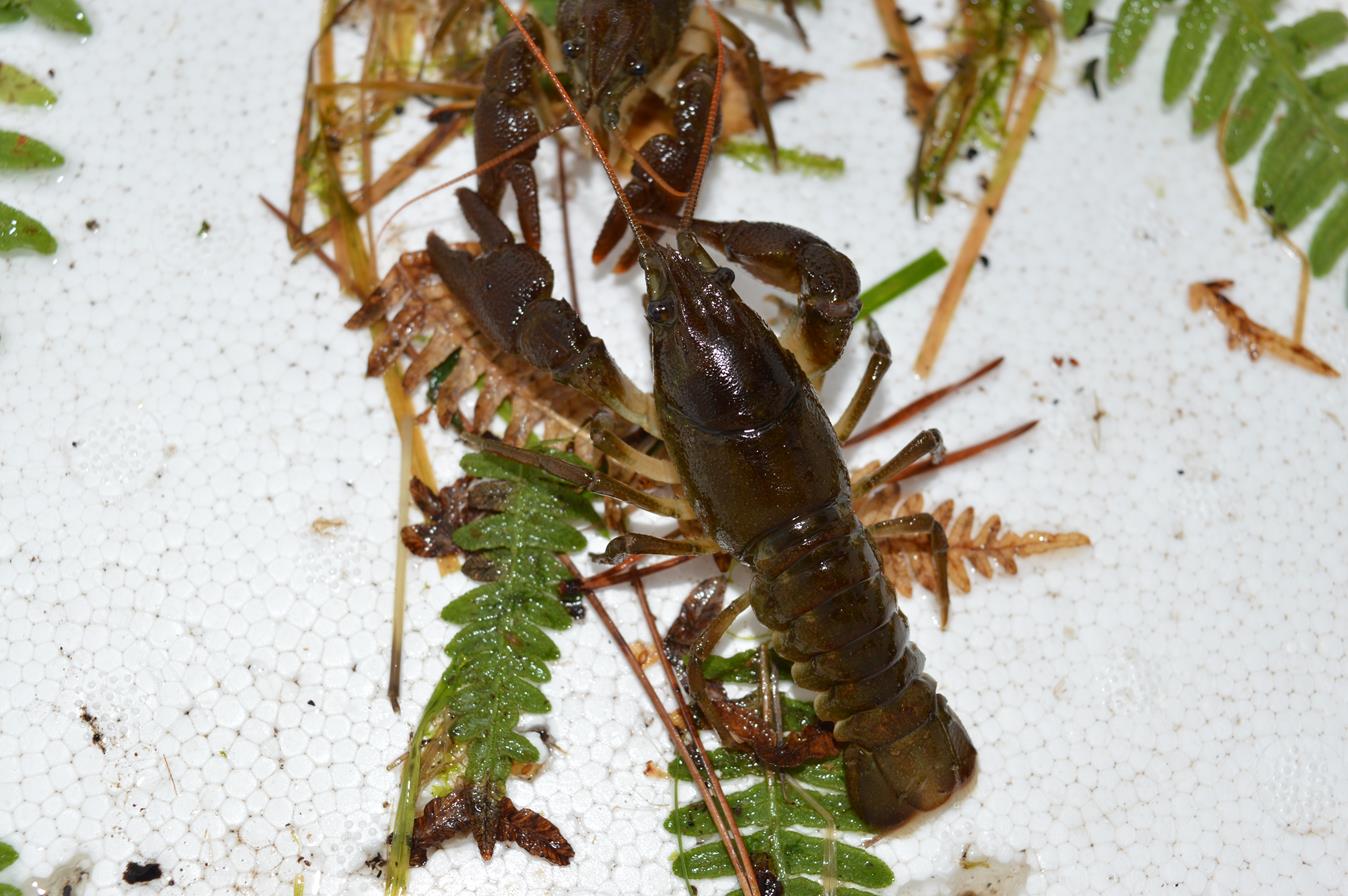This is an archived website, available until June 2027. We hope it will inspire people to continue to care for and protect the South West Peak area and other landscapes. Although the South West Peak Landscape Partnership ended in June 2022, the area is within the Peak District National Park. Enquiries can be made to customer.service@peakdistrict.gov.uk
The 5-year South West Peak Landscape Partnership, 2017-2022, was funded by the National Lottery Heritage Fund.
Endangered White-Clawed Crayfish given new homes in the South West Peak
Posted on 4 December 2017
It’s official, white-clawed crayfish are back in the South West Peak!
While it may seem small to us the white-clawed crayfish is the UK’s largest native freshwater invertebrate and is an important component of our waterways. This often hidden and largely defenceless species is now globally endangered due to non-native competitors, disease and widespread habitat loss.
However, with funding from the Environment Agency, the Crayfish in Crisis project, part of the South West Peak Landscape Partnership, (supported by the Heritage Lottery Fund), is doing something about it. The goal of the project is to eventually re-establish permanent and stable populations in the South West Peak. The project team is surveying isolated headwaters in the Peak District to identify the best locations for white-clawed crayfish to call home. Once suitable new homes are found, then crayfish need to be sourced from so-called ‘donor’ populations which have good numbers of healthy native crayfish at present, but which may be at risk in the future.
One such example of a donor population is from the Forestry Commission’s Cannock Chase in Staffordshire. Nick Mott from Staffordshire Wildlife Trust has been working with the Forestry Commission and Staffordshire County Council at this site for the last few years. Here, there are good populations of native crayfish but sadly their time is limited due to ever-expanding populations of American signal crayfish nearby. Cannock Chase represents a good donor population to use for populating headwater streams.
James Stewart, Forestry Commission Wildlife Ranger said: “We have been working hard with Nick for several to years protect the crayfish and improve their habitat. It is great to have such a healthy population and be in a position to support an important project like this. The thought that our work could contribute to a new, safe population of native crayfish is something we are proud of.”
Nick who is leading the project said: “We are delighted to announce that the conservation partners were able to establish our first two ‘Ark’ sites during the first year of the project. Together with future translocations, we hope that they will form the nucleus of new breeding populations in this area. The sites were selected with great care and our aim is to protect them into the future. The biggest threat remains the spread of American signal crayfish and the ‘crayfish plague’ they sometimes carry.”
To help protect the white-claws, we have an important message for visitors to watercourses in the Peak District: please always Check, Clean & Dry your wellies, fishing gear or dogs before you enter the water. Please do the same at the end of your day. Here’s the website address for more information: http://www.nonnativespecies.org/checkcleandry/
As with all great ventures it is impossible to succeed alone; conservation partners are providing both time and funding. Tim Brooks, Environment Agency Biodiversity Technical Officer is excited about this most recent effort to improve the long term chances of the species “White-clawed crayfish are a keystone species in our freshwater environment and this work is a real positive step in conserving our native wildlife for future generations”.


